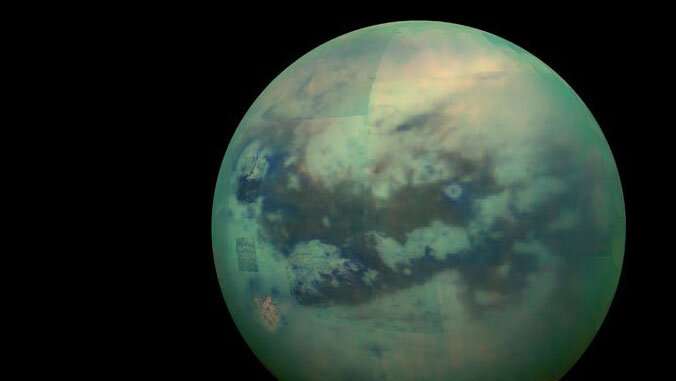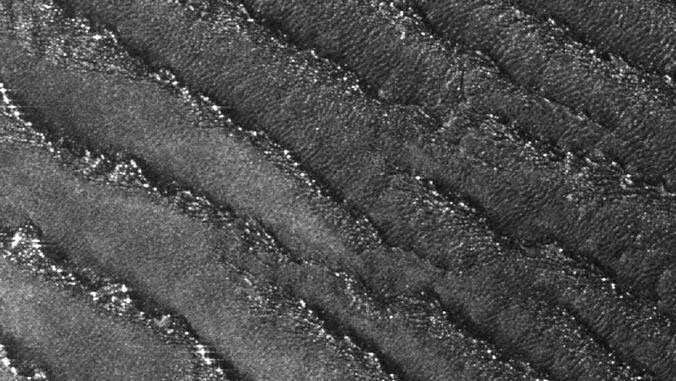October 17, 2019 report
A new theory to explain how the dunes on Titan formed

A trio of researchers with the University of Hawaii has developed a new theory to explain how the dunes on Saturn's largest moon, Titan, may have formed. In their paper published in the journal Science Advances, Matthew Abplanalp, Robert Frigge and Ralf Kaiser suggest that rather than forming from rainfall, the dunes have formed on the moon's surface.
Prior research that involved studying data from the Cassini space probe showed that Titan's atmosphere contains some organic molecules that are made from long chains of carbon atoms. This has led to theories that such organic molecules fall from the atmosphere and form the dunes that cover part of the equatorial region on the moon's surface. In this new effort, Abplanalp, Frigge and Kaiser suggest that the dunes may have arisen another way—via cosmic rays striking acetylene ice, inciting reactions that lead to the formation of the materials that make up the dunes.
The researchers tested their theory by creating batches of acetylene ice in their lab and then bombarding it with radiation similar to that experienced by Titan. They then heated the ice until it sublimated, leaving behind material made of organic molecules similar to those believed to form the dunes on Titan. In so doing, they found that the process could produce phenanthrene in as little as 100 years; other molecules would take longer.
They suggest that the dunes on Titan are formed at last partially by chemical reactions on the surface. They point out that if that is the case, it could explain similar dunes on other planets or moons that have no atmosphere. They note the process would likely be more efficient in worlds with no atmosphere, such as Makemake and Pluto—both of which have shown indications of organic ice on their surface.

The researchers acknowledge that both theories that seek to explain the means by which the dunes on Titan form are still unproven. But they hope that will change, as NASA plans to send a probe called Dragonfly to Titan. It is scheduled to land near the dunes in 2034, allowing for samples to be collected and studied.
More information: Matthew J. Abplanalp et al. Low-temperature synthesis of polycyclic aromatic hydrocarbons in Titan's surface ices and on airless bodies, Science Advances (2019). DOI: 10.1126/sciadv.aaw5841
Journal information: Science Advances
© 2019 Science X Network





















